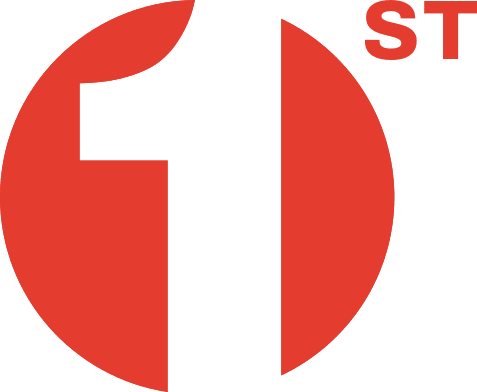


There are a number of purpose-built 5-axis / 5-sided machining centres on the market, including types with a 4th axis rotary table and either a trunnion support or a swivelling B-axis head to provide the fifth CNC axis. Various companies supply such machines, but none of the configurations suited Brunswick Tooling, Brighouse, a manufacturer and exporter of reamers and special cutting tools.
Instead, it asked Hurco to supply an alternative 5-axis configuration based on one of its 3-axis machining centres fitted with a Kitagawa 2-axis NC tilting rotary table from 1st Machine Tool Accessories. Some regard such a solution as inferior to a custom-made 5-axis machine, but for producing Brunswick Tooling’s products, which are essentially rotational components, the arrangement has proved optimal.
High accuracy machining
To ensure rigidity and hence vibration-free machining, long tool life and component accuracy, a Kitagawa rotary tilting table was sourced through sole agent, 1st MTA, whose engineers advised on the best model for the application. It was a TT182 hydraulic, 2-axis model with -35 / +110 tilt angle and a 360-degree table rotation.
According to Brunswick Tooling’s managing director, Paul Briggs, the attachment is so robust that machining performance is just as good as that of purpose-built, 5-axis machines.
Indexing accuracies on the Kitagawa table of 20 and 60 seconds of arc respectively for table rotation and tilt, with 4 seconds of arc repeatability, ensure top precision metalcutting when combined with the machining centre’s ±0.005 mm linear positioning accuracy and ±0.0025 mm repeatability.
The real advantage of the set-up is that Brunswick Tooling is able to clamp the rotary table in its vertical position and fit a tailstock to the left hand side of the machine bed. In this way, the tools it manufactures can be positioned between centres and clamped securely for prismatic machining operations to be carried out, such as milling of indexable insert pockets.
However for certain jobs, the tailstock is removed and the Kitagawa table is inclined upwards to position the component at a compound angle for 3-axis machining of complex features on some tooling products. Both rotary axes are currently used in this way, ie indexed and clamped, but they could be interpolated with the linear axes in future, if the need arises.
It was the flexibility of being able to use the machine either in turn-mill mode or as a 5-sided or 5-axis machining centre that convinced Mr Briggs to choose the Hurco / 1st MTA – Kitagawa option. The merits of the decision have been underlined by the purchase of a second, identically equipped machining centre.
Mr Briggs concluded, “Particularly for complex tooling manufacture, which is becoming more and more frequent, a Kitagawa rotary table on a 3-axis machining centre platform is the future for our business.
Wide range of rotary tables for all applications
1st MTA offers an extensive variety of Kitagawa rotary tables to boost the productivity of CNC machine tools by exploiting the benefits of one-hit machining. The advantages of such a technique are: only one machine set-up; one fixturing set-up; cost and time savings associated with reduced parts handling; and the elimination of tolerance errors accumulated as workpieces are moved from machine to machine.
The Kitagawa range covers NC rotary tables with single spindles, multi-spindles, tilting tables and waterproof tables, configured with the motor position on the right, left, back or top. Table diameter ranges from as small as 100 mm, including some with built-in 5C spindles, up to 500 mm. They can be delivered with a number of options including built-in rotary joint with supply ports in the faceplate for operation of fixtures and workholding. Depending on the application, table versions are available that offer higher speeds and higher clamping forces for heavy duty cutting.
The most popular single-axis models can be configured to be used in conjunction with the Kitagawa MMiH controller and by using a simple M code. The table can be operated via any CNC system, giving the versatility of being able to swop it between machines with different control on the shop floor. The MMiH2 can control Kitagawa’s TT range of tilting tables, again using just one M code. Another option is to control the MMiH through an RS232 connection, which allows the programme for the rotary table to be included in the machine program.
1st MTA offers numerous Kitagawa options to complement the rotary tables, such manual tailstocks, pneumatic or hydraulic tailstocks, tail spindles which have a built-in clamping system for trunnion assemblies, rotary joints, air/hydraulic intensifiers, and manual, pneumatic and hydraulic chuck and collet chuck systems.
The full range of Kitagawa Rotary Tables are available from 1st MTA. If you have any questions or queries about any of the products mentioned in this article, please don’t hesitate to contact us on 0800 783 0510 or enquiries@1mta.com.